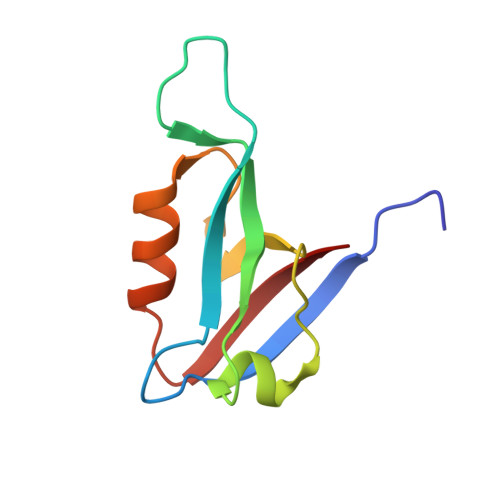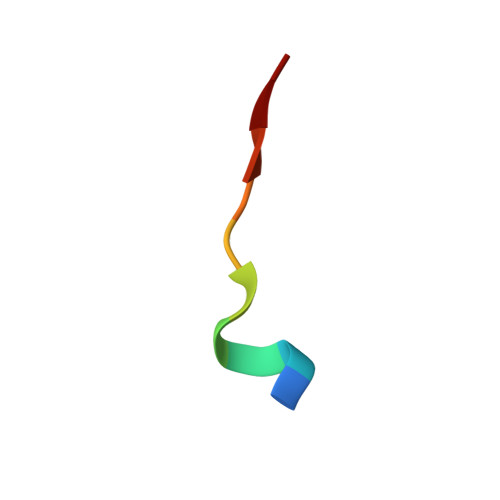Presynaptic spinophilin tunes neurexin signalling to control active zone architecture and function.
Muhammad, K., Reddy-Alla, S., Driller, J.H., Schreiner, D., Rey, U., Bohme, M.A., Hollmann, C., Ramesh, N., Depner, H., Lutzkendorf, J., Matkovic, T., Gotz, T., Bergeron, D.D., Schmoranzer, J., Goettfert, F., Holt, M., Wahl, M.C., Hell, S.W., Scheiffele, P., Walter, A.M., Loll, B., Sigrist, S.J.(2015) Nat Commun 6: 8362-8362
- PubMed: 26471740
- DOI: https://doi.org/10.1038/ncomms9362
- Primary Citation of Related Structures:
4XHV - PubMed Abstract:
Assembly and maturation of synapses at the Drosophila neuromuscular junction (NMJ) depend on trans-synaptic neurexin/neuroligin signalling, which is promoted by the scaffolding protein Syd-1 binding to neurexin. Here we report that the scaffold protein spinophilin binds to the C-terminal portion of neurexin and is needed to limit neurexin/neuroligin signalling by acting antagonistic to Syd-1. Loss of presynaptic spinophilin results in the formation of excess, but atypically small active zones. Neuroligin-1/neurexin-1/Syd-1 levels are increased at spinophilin mutant NMJs, and removal of single copies of the neurexin-1, Syd-1 or neuroligin-1 genes suppresses the spinophilin-active zone phenotype. Evoked transmission is strongly reduced at spinophilin terminals, owing to a severely reduced release probability at individual active zones. We conclude that presynaptic spinophilin fine-tunes neurexin/neuroligin signalling to control active zone number and functionality, thereby optimizing them for action potential-induced exocytosis.
Organizational Affiliation:
Freie Universität Berlin, Institute for Biology/Genetics, Takustrasse 6, Berlin 14195, Germany.


















